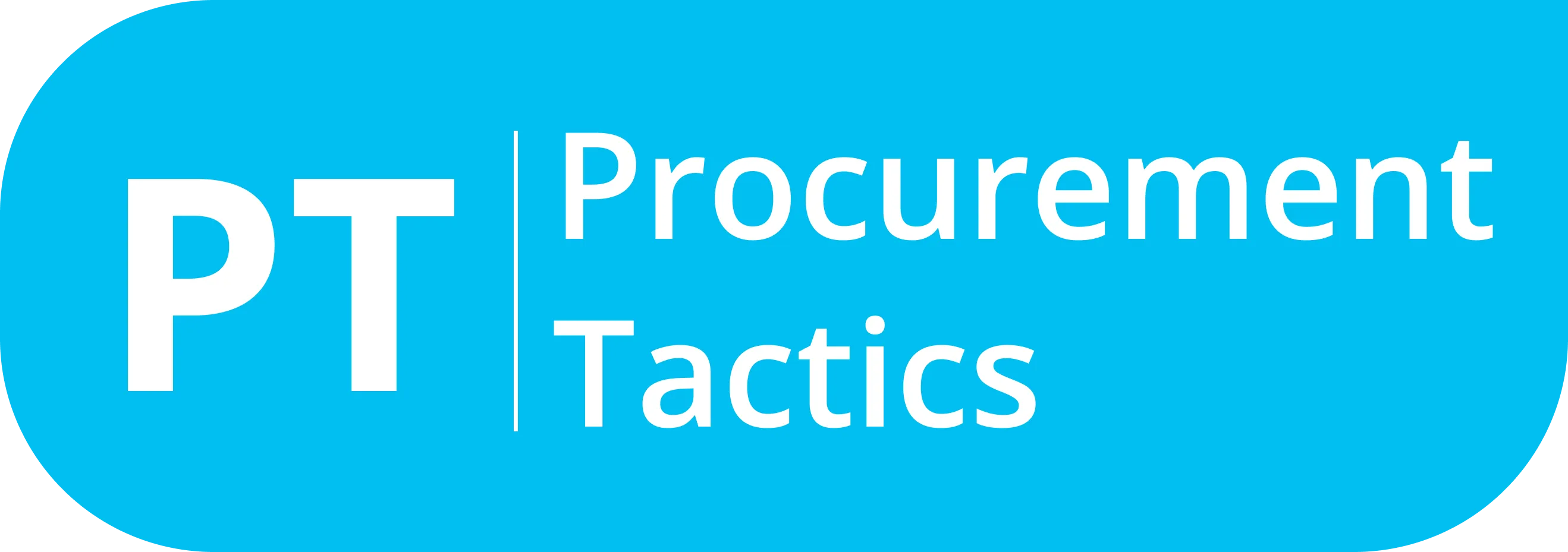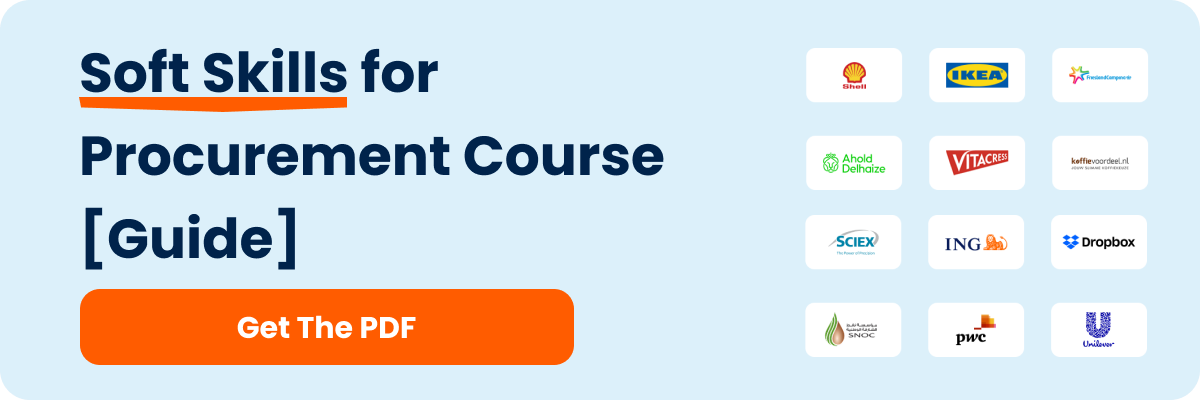Written by Marijn Overvest | Reviewed by Sjoerd Goedhart | Fact Checked by Ruud Emonds | Our editorial policy
9 Best Practices for Upskilling Procurement Professionals
- The best practices for upskilling procurement professionals focus on a structured approach to skill development.
- It involves identifying required skills, assessing current levels, and addressing gaps through tailored learning journeys.
- Additionally, effective learning platforms enhance training, while tracking progress with assessments and feedback ensures success and continuous improvement.
9 Best Practices for Upskilling Procurement Professionals
As many people show a strong desire to upskill, Here are the nine best practices for upskilling the workforce according to McKinsey. Businesses that implemented these practices were two and a half times more successful than those that failed to adopt at least one.
1. Identify the needs of procurement professionals
Procurement professionals who want to improve their skills start by identifying the abilities needed to support business growth.
This process usually begins with changes in business priorities, such as AI adoption, global crises, inflation, or sometimes a mix of all these disruptions. These shifts that can disrupt the whole procurement process require companies to focus on developing specific skills to address these challenges.
For example, a manufacturing company wants to transition from its usual sourcing practices to sustainable sourcing. This transition requires procurement managers to align their strategies with new environmental goals.
Thus, senior procurement professionals must identify the skills needed by first interviewing all the procurement professionals in their team so they know what to focus on.
With this process, you can have a clear description of the roles of each procurement professional within the team and a list of skills needed to transition smoothly to sustainable sourcing.
2. Assess their current skill level
The second step is to know the current skill level of procurement professionals. The skills that were identified in the first step serve as inputs for this assessment in which you will determine the current skill level of your procurement team. The assessment can be conducted through individual evaluations or interviews with the senior procurement manager.
To connect this example to the first step, the company had already identified the varying levels of expertise among its procurement professionals. However, some still lacked the necessary skills to align their strategies with sustainable sourcing practices.
With this in mind, the company should assess the skill levels of the procurement professionals who are still lacking by mapping the behaviors of different procurement teams using a competency framework.
This process will allow the company to pinpoint skill gaps and understand where further development is needed to ensure that all procurement professionals can abide by sustainable policies in place to have a successful transition to sustainable sourcing.
3. Analyzing the skill gap
The skills gap refers to the difference between the current and desired skill levels. All the steps in the process focus on addressing the skill gap. Part of analyzing the skill gap involves making a business case, as not all gaps are impactful. Gaps that may cause disruptions or do not create any value must be prioritized.
To continue the example earlier, imagine that the organization had already identified varying levels of expertise among its procurement professionals. However, some procurement professionals still lacked the necessary skills to effectively implement these strategies, which hindered progress. This skills gap not only delayed the transition but also prevented the company from fully realizing the potential value of sustainable sourcing practices.
A similar gap was observed with procurement professionals in other parts of the organization. Some teams struggled with data analysis and failed to leverage analytics to make informed sourcing decisions. This lack of data-driven decision-making prevented them from identifying cost-saving opportunities and supplier performance improvements.
4. Creating tailored learning journeys
Each procurement professional has different learning needs and effective training programs provide customized experiences. Usually, these learning journeys are created per role. For example, a senior procurement professional will receive more advanced training compared to a procurement agent.
It is not uncommon to train everyone on several core skills before providing room to specialize. Consider a t-shaped procurement professional. This individual has a wide set of core skills (the horizontal part of the “T”) while having a deep expertise in a specific area (the vertical part of the “T”).
With this model, every procurement professional requires a minimum understanding of data and business. However, the level of proficiency required will depend on their role, with certain positions needing more advanced skill sets.
You can try our T-Shaped Procurement Assessment tool to know what competencies you must focus on the most. With this, you will have a general idea of what you should work on to improve yourself while creating more value for the company.
5. Crafting a learning portfolio of interventions
Learning can take many forms. It can be in the form of online courses, group sessions, assignments, tests, and other learning initiatives. To make it work, it means that you will need to go beyond the usual learning program to craft a portfolio of interventions that build knowledge, skills, and habits successfully.
For example, a company implemented various offline events next to an online training program. During the program, employees shared their projects based on the training. With this technique, it helped them apply what they learned. The best ideas were chosen and put into action, making the training more useful and valuable for the company.
6. Selecting a learning technology
Learning management systems play an important role in the success of employee learning. Having a good learning system supports learning by offering virtual learning opportunities and fostering a sense of community among learners.
However, weak systems can be difficult to use and discourage engagement. Thus, choosing the right technology can significantly improve the effectiveness of upskilling initiatives.
For example, the company we mentioned earlier that is transitioning to sustainable sourcing selected a platform with a focus on procurement and sustainability.
The platform allowed procurement professionals to simulate sourcing scenarios and collaborate with others on best practices.
Senior procurement leaders also participated by sharing insights and feedback, which encouraged active engagement and helped align strategies with sustainable goals.
7. Launching a procurement skilling hub
Traditional upskilling initiatives are not enough. Procurement professionals need to educate themselves continuously to become better and more competent to stay effective in procurement.
A study suggests that about half of all skills are about to be outdated. To address this, organizations are now establishing procurement learning hubs. These hubs provide continuous education and encourage procurement teams to regularly enhance their knowledge and capabilities.
By shifting from one-time training sessions to a continuous learning approach, these hubs ensure that procurement professionals are always equipped to meet new challenges and drive business success.
8. Delivering skill transformation
Delivering skill transformation at scale is one of the hardest parts. While training a small team of procurement professionals in person can be straightforward, providing the same level of quality across a large multinational organization is more complex. That is why it needs careful planning and execution of upskilling programs for large organizations to be successful.
Best practices include making the upskilling program structured, establishing a timeline that is communicated broadly, and hosting a centralized kick-off. These actions align the entire organization and focus efforts on achieving common learning objectives.
A critical factor in scaling upskilling is the chosen learning technology that we mentioned earlier. The ability to access training at any time and from anywhere, while also having quick access to answers, is essential for successful learning. Other best practices include creating an online community for learners to connect, providing strong technical support, and offering a well-designed online learning program that builds essential skills.
9. Track the impact of upskilling
An old quote from Peter Drucker reads, “If you can’t measure it, you can’t improve it.” This is true, especially when it comes to improving your skills. The effectiveness of upskilling initiatives can be tracked by using various methods.
For example, in the case of the manufacturing company transitioning to sustainable sourcing, the company measured the impact of its upskilling efforts through pre- and post-assessments. They also tracked how many projects related to sustainable sourcing were implemented after the training.
In addition to these measures, the company also used manager feedback and work performance to evaluate the success of the training program.
Having these metrics in place, helps the company identify which procurement professionals have successfully aligned their strategies with sustainable sourcing practices and which areas still need further development.
Checklist
We discussed how to build a procurement academy. But how do you select a training partner? Use this checklist to make the right decision. Got any questions? Get in touch with us.
Conclusion
Improving your skills as a procurement professional is important to stay ahead of the curve, especially in the current changes and disruptions in procurement.
With all these best practices we have shared with you, you will be able to counter all the disruptions and update the skills needed to navigate all the challenges that you may face in procurement.
Furthermore, you must remember that upskilling is not a one-time initiative; it is a continuous commitment to personal and professional growth. With this, it’s important to evaluate the skills you think need improvement. A great starting point is our T-Shaped Procurement Assessment, which can offer you valuable insights into your current skill set and help you identify areas for growth.
Frequentlyasked questions
What are the best practices for upskilling procurement professionals?
Why is upskilling important for procurement professionals?
How can organizations identify the skills their procurement teams need?
Organizations should assess business priorities and interview procurement professionals to identify necessary skills. This helps align team capabilities with company objectives.
About the author
My name is Marijn Overvest, I’m the founder of Procurement Tactics. I have a deep passion for procurement, and I’ve upskilled over 200 procurement teams from all over the world. When I’m not working, I love running and cycling.






